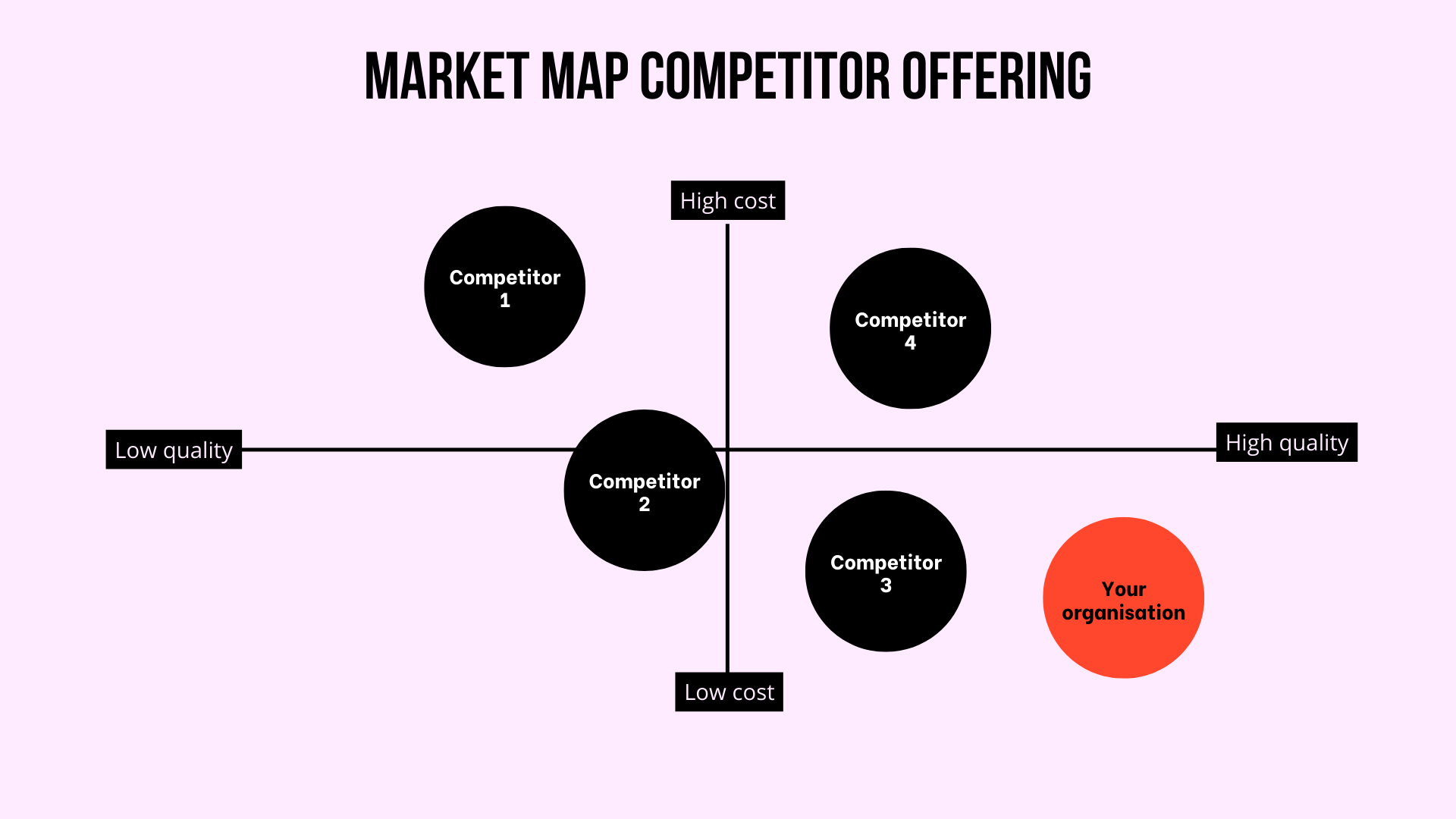Market mapping is a crucial part of building an effective marketing strategy. It not only allows you to gain a clear understanding of your current position in the marketplace, but also allows you to spot any gaps for development, allowing you to differentiate your brand from competitors and draw customers in.
Market mapping definition
Market mapping is the method of using a graph to visually plot an organisations position in the market against competitors to understand customer perceptions product availability and pricing structures.
What is market mapping in marketing?
In marketing, market mapping can sometimes known as perceptual mapping or a competitive landscape positioning map.
A market map charts competitors on a grid focused on two main attributes, one running vertically and one running horizontally.
These attributes can be focused on any aspect of a competing organisation. From brand messaging to product developments to range or quality of the products on offer. The key thing to consider is that these should be focused on attributes that can be rated on a high and low scale. Some examples include:
-
High and low price
-
Low quality vs high quality
-
Healthy vs unhealthy
-
Friendly vs professional
-
Healthy vs unhealthy
-
Informative vs concise
-
Aspirational or reserved
Benefits of market mapping
Perceptions are key when it comes to understanding how your audience makes a purchase decision. Getting to know your current position in the market and understanding your USP (unique selling point) is critical in allowing your brand to stand out in a crowded marketplace.
Market mapping can be used to inform brand positioning, campaign messaging, content plans and even new product developments to ensure you’re bringing value and building trust with your audience.
Not only this but, having a visual overview of the market landscape is really useful when you’re presenting your findings to your team or senior stakeholders. Using visual representations in your strategy makes it easier to demonstrate your findings and more crucially, get buy in from your team.
Market mapping example
Below you’ll see an example of how a simple market map can be constructed. The simplicity of the graph allows you to quickly pinpoint and analyse where your competitors sit in the market so you can benchmark your organisation against them.

How to build an effective market map
You can approach a market map in various ways to gain an understanding of the competitive landscape.
Firstly, you can review product or services to understand the range on offer. You should focus on two key attributes to map competition, some examples are: low vs. high quality, low vs. high cost, healthy vs. unhealthy. The attributes you pick should be directly linked to your service or product offering in order to provide insights you can act on in your marketing strategy.
You can also develop a market map to review competitor messaging, looking for themes amongst your competitor’s online and offline materials. Consider the tone of voice and if it is informative or concise, aspirational or reserved, professional or friendly. Decide on two attributes that are common in your sector and focus on these in your messaging map.
Desk research is a great way to get starting on building your market map to gain an initial understanding of the marketplace. Then consumer surveys can be used to map perceptions.
If you’re looking to transform your marketing and use data and insights to lead your strategy, our 12-week marketing programme dives into the process of competitor research and understanding audience perceptions.